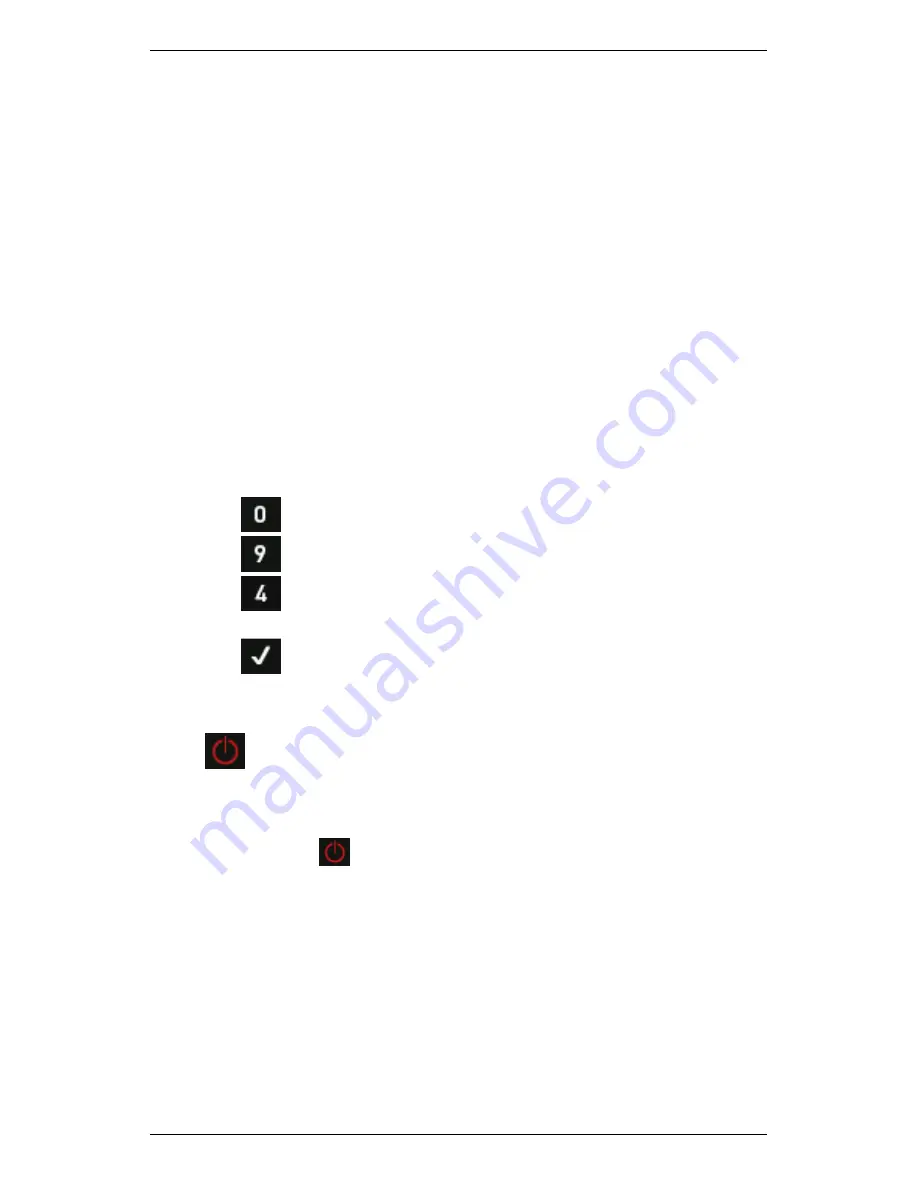
Section 13 — General Setup Options
250
Set Sleep Mode Timeout
Sleep mode switches your instrument off if no keys are pressed for a set
period of time (15 minutes by default). This method of automatically
powering off the instrument conserves battery charge. It also enables
fast powering up (approximately 3-7 seconds). However, it is less battery
efficient than using the
Complete Powerdown
option because the
internal module remains switched on. Your instrument will power down
completely once the complete powerdown timeout period has elapsed.
When recording a route, powering up the instrument from
Sleep
mode
will return you to the last displayed menu. In all other cases, your
instrument will display the main menu.
Change Default Sleep Mode Timeout
To change the default time period for Sleep mode timeout:
1.
Press
Options
on the main menu.
2.
Press
Battery Pwr Mngmnt
.
3.
Press
Enter Sleep Mode
> Enter a value in minutes (minimum
1, maximum 9999).
4.
Press
.
Switch Instrument On
Press
Power
to power up the instrument from
Sleep
mode.
NOTE: Sleep mode is disabled if the battery level drops to 25% or
less. The instrument will immediately enter Complete Powerdown
Mode when
Power is pressed, or at the completion of the
Sleep Mode Timeout period.
Summary of Contents for SCOUT100-Ex
Page 18: ...Section 1 Introduction 7 Installation Control Drawing for Hazardous Locations ...
Page 20: ...Section 1 Introduction 9 Installation Control Drawing GE2214VBX for ATEX Hazardous Locations ...
Page 21: ...Section 1 Introduction 10 IECEx ATEX Declaration of Conformity ...
Page 40: ...Section 2 Instrument Fundamentals 29 Viewing hint labels Accessing more detailed help ...
Page 44: ...Section 2 Instrument Fundamentals 33 Using the advanced options ...
Page 54: ...Section 3 Sensors 43 Selecting the appropriate voltage for your tachometer and machine ...
Page 85: ...Section 4 Measurement Types and their Uses 74 Selecting the required parameter settings ...
Page 111: ...Section 4 Measurement Types and their Uses 100 Using the keypad to enter measurements ...
Page 116: ...Section 4 Measurement Types and their Uses 105 Example of tracked measurement ...
Page 120: ...Section 4 Measurement Types and their Uses 109 Saving multi channel measurements ...
Page 124: ...Section 5 Set Measurement Options 113 Spectral lines submenu ...
Page 164: ...Section 8 Send and Receive Information 153 Transferring recordings to Ascent ...
Page 194: ...Section 9 Working with Routes 183 Linear Speed ...
Page 241: ...Section 11 Balancing Rotors 230 Splitting a weight ...
Page 247: ...Section 12 Balancing Walkthrough 236 Taking an initial reading ...






























